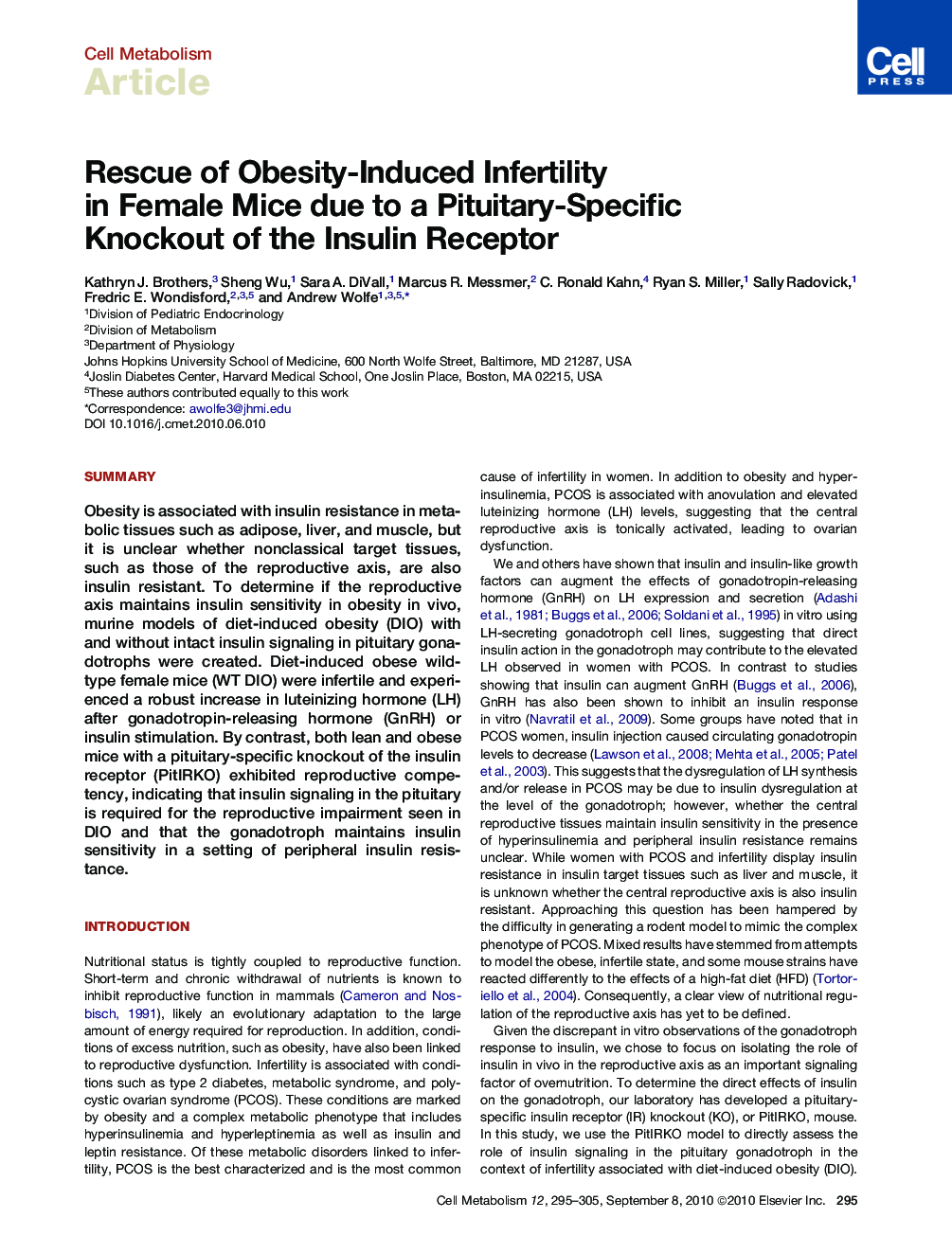| Article ID | Journal | Published Year | Pages | File Type |
|---|---|---|---|---|
| 2793147 | Cell Metabolism | 2010 | 11 Pages |
SummaryObesity is associated with insulin resistance in metabolic tissues such as adipose, liver, and muscle, but it is unclear whether nonclassical target tissues, such as those of the reproductive axis, are also insulin resistant. To determine if the reproductive axis maintains insulin sensitivity in obesity in vivo, murine models of diet-induced obesity (DIO) with and without intact insulin signaling in pituitary gonadotrophs were created. Diet-induced obese wild-type female mice (WT DIO) were infertile and experienced a robust increase in luteinizing hormone (LH) after gonadotropin-releasing hormone (GnRH) or insulin stimulation. By contrast, both lean and obese mice with a pituitary-specific knockout of the insulin receptor (PitIRKO) exhibited reproductive competency, indicating that insulin signaling in the pituitary is required for the reproductive impairment seen in DIO and that the gonadotroph maintains insulin sensitivity in a setting of peripheral insulin resistance.
Graphical AbstractFigure optionsDownload full-size imageDownload high-quality image (202 K)Download as PowerPoint slideHighlights► Mixed-background female mice become infertile due to diet-induced obesity (DIO) ► WT DIO mice have elevated LH, disrupted estrous cycles, and high sensitivity to GnRH ► Disruption of IR in the pituitary normalizes reproductive function in female DIO mice ► Pituitary insulin sensitivity is maintained in DIO mice
